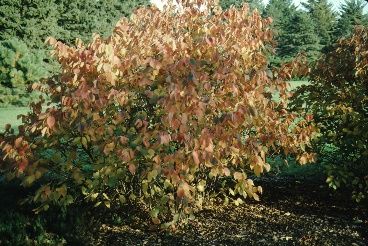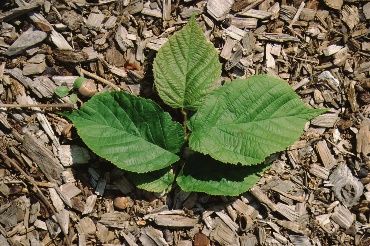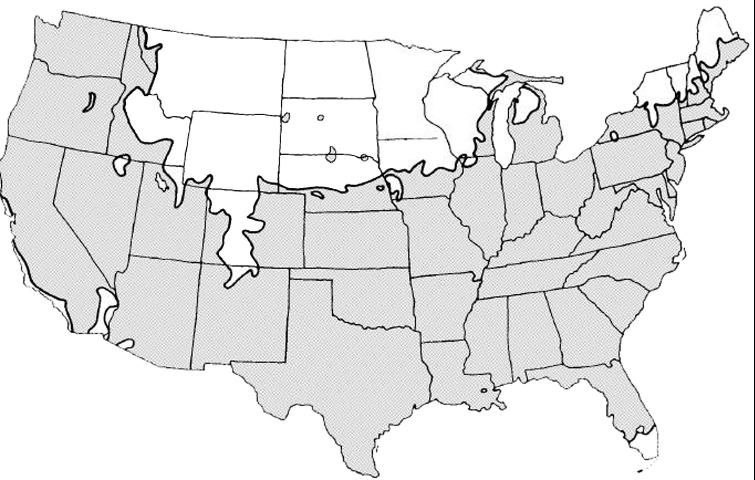Introduction
Native to moist areas of the eastern United States, American filbert goes unnoticed until the bright orange fall color brings the woods to life. Plants grow no taller than about 12 feet, but can reach higher in a shaded location. The nuts are most attractive to wildlife, especially squirrels. Once they discover the fruit on a shrub, they can strip it in a day.

Credit: Ed Gilman, UF/IFAS

Credit: Ed Gilman, UF/IFAS

Credit: Ed Gilman, UF/IFAS
General Information
Scientific name: Corylus americana
Pronunciation: KOR-rill-us uh-mair-rick-KAY-nuh
Common name(s): American filbert
Family: Betulaceae
Plant type: shrub
USDA hardiness zones: 5 through 9 (Figure 4)
Planting month for zone 7: year round
Planting month for zone 8: year round
Planting month for zone 9: year round
Origin: native to North America
Invasive potential: aggressive, spreading plant
Uses: hedge; border; mass planting; screen
Availability: grown in small quantities by a small number of nurseries

Credit:
Description
Height: 8 to 15 feet
Spread: 8 to 12 feet
Plant habit: round
Plant density: moderate
Growth rate: moderate
Texture: coarse
Foliage
Leaf arrangement: alternate
Leaf type: simple
Leaf margin: serrate
Leaf shape: ovate
Leaf venation: pinnate
Leaf type and persistence: deciduous
Leaf blade length: 4 to 8 inches
Leaf color: green
Fall color: yellow; orange
Fall characteristic: showy
Flower
Flower color: brown
Flower characteristic: spring flowering
Fruit
Fruit shape: irregular
Fruit length: 1/2 to 1 inch
Fruit cover: dry or hard
Fruit color: brown
Fruit characteristic: attracts birds
Trunk and Branches
Trunk/bark/branches: typically multi-trunked or clumping stems; not particularly showy
Current year stem/twig color: brown
Current year stem/twig thickness: thin
Culture
Light requirement: plant grows in part shade/part sun
Soil tolerances: acidic; alkaline; sand; loam; clay
Drought tolerance: high
Soil salt tolerances: unknown
Plant spacing: 36 to 60 inches
Other
Roots: sprouts from roots or lower trunk
Winter interest: no special winter interest
Outstanding plant: not particularly outstanding
Pest resistance: long-term health usually not affected by pests
Use and Management
American filbert is not readily available in nurseries but when found can be planted in a shaded woodland setting to add color and fruit in the fall. It makes a nice surprise in the shrub border since it goes unnoticed, forming a green mass most of the year. It can also be planted along the foundation of a commercial building to soften the corners. It grows too tall for planting near a private home.
Provide moisture until the plant is established. Once established, it will survive and grow with little or no irrigation provided it is located in a moist area. It is as near to maintenance free as any plant.
Pests and Diseases
No pests or diseases are normally seen on this plant.